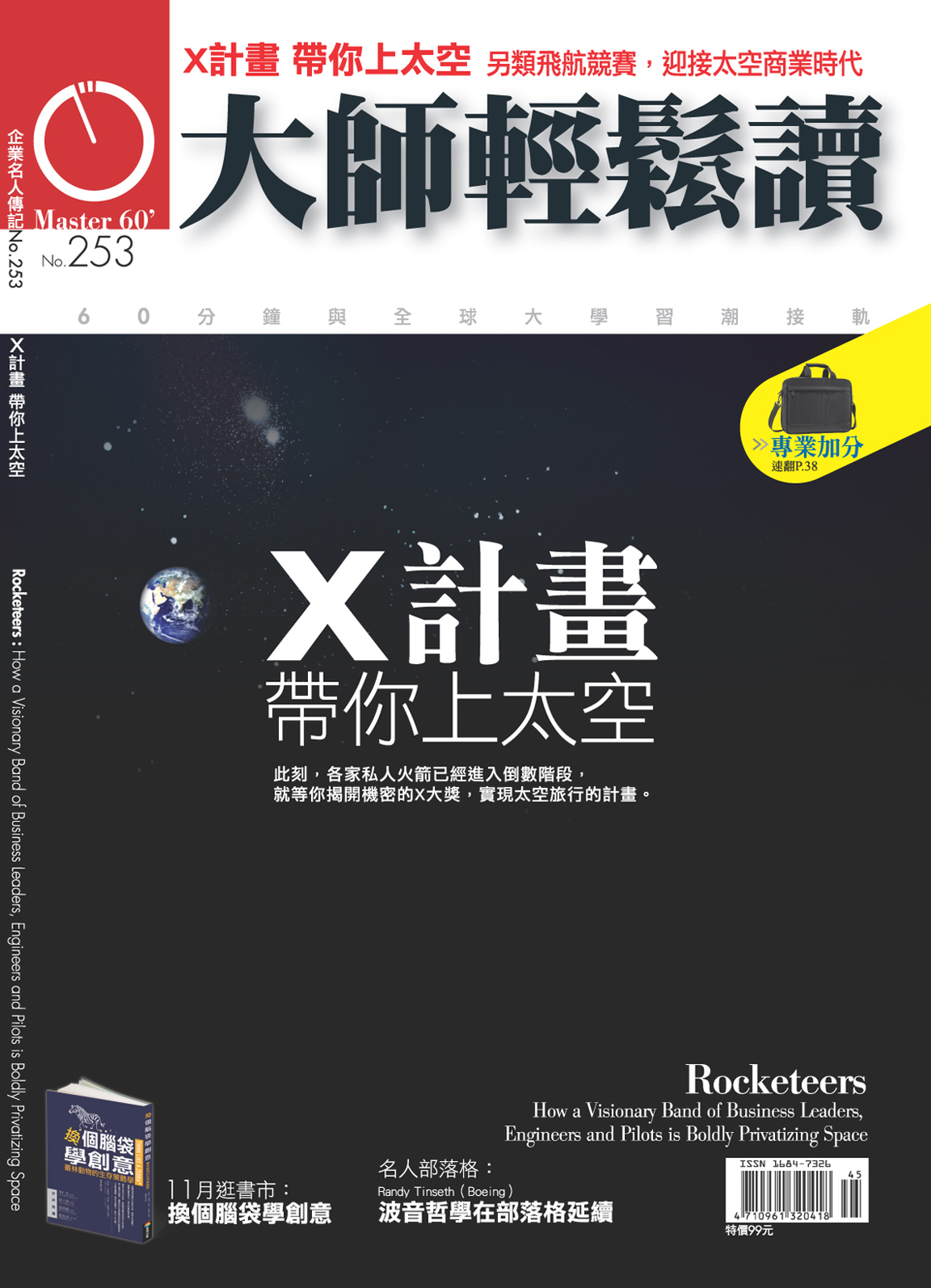




| X大獎緣起 |
感謝您對大師輕鬆讀的愛護,並且全力支持您合理地使用我們為您精心編製的內容。希望未來可以提供您更方便更友善的服務。
感謝您對大師輕鬆讀的愛護,並且全力支持您合理地使用我們為您精心編製的內容。希望未來可以提供您更方便更友善的服務。
| The X-Prize Concept |
感謝您對大師輕鬆讀的愛護,並且全力支持您合理地使用我們為您精心編製的內容。希望未來可以提供您更方便更友善的服務。
感謝您對大師輕鬆讀的愛護,並且全力支持您合理地使用我們為您精心編製的內容。希望未來可以提供您更方便更友善的服務。
商業航空產業今日的規模高達數十億美元,然而奠定產業基礎的卻不是政府資金或是各項緊密協調的研發計畫,反而是奠基於當時知名機構與人士提供的一系列獎金,而競逐這些獎金的則是一群門外漢、獨立發明家和業餘飛行愛好者。舉例來說:
.獎金1萬法朗,徵求能夠持續飛行15分鐘的人。
.獎金1萬英鎊,徵求第一位能不著陸飛越大西洋的人。
.獎金1萬美元,徵求第一位能夠從紐約飛至紐約州首府阿爾巴尼市的人,航程約134哩。
.獎金2萬5,000美元,徵求第一位能夠從紐約不著陸直飛巴黎的人,這筆獎金在1927年5月由查爾斯.林白駕駛「聖路易精神號」贏得。
The foundations of what is today the multi-billion-dollar commercial aviation industry were never laid by govern-ment funding or by a tightly coordinated research and development program. Instead, a group of tinkerers, garage inventors and part-timers responded to a series of cash prizes which were offered by some of the premier institu-tions and individuals of that era. Some of these prizes were:
.10,000 French francs for whoever could accomplish fifteen minutes of sustained flight.
.$10,000 for the first nonstop transatlantic flight.
.$10,000 for the first flight between New York and Albany, a dis-tance of 134 miles by air.
.$25,000 for the first nonstop flight between New York and Paris—won by Charles Lindbergh flying The Spirit of St. Louis in May, 1927.
「要進入100公里高空,獲勝的太空船速度勢必要達到3馬赫,也就是3倍音速。雖然這跟進入地球軌道比起來,只需用1/25的能源,但速度仍然比現今任何私人航空器還要快。即便太空船能以傳統的噴射引擎或氣球爬升到低海拔的高度,最後要進入太空仍然要靠火箭引擎。太空船必須要有維生系統來維持駕駛員與乘客的生命,讓他們能夠回到大氣層,還要有輔助推進器引導太空船順利重回大氣層。太空船必須堅固耐用,能夠禁得起3馬赫高速產生的高熱與衝擊,而且還要能夠以良好的狀態著陸,才能在2星期內再度航行。整艘太空船以及引擎與油槽都必須要能重複使用。」──貝爾費歐
感謝您對大師輕鬆讀的愛護,並且全力支持您合理地使用我們為您精心編製的內容。希望未來可以提供您更方便更友善的服務。 |
“To reach 100 kilometers, the winning ship would have to travel Mach 3—three times the speed of sound. Even though that required only 1/25 the amount of energy needed to reach orbit, it was still faster than any private aircraft ever built. Although the craft could climb through lower altitudes by conventional means—jet engines or a balloon—it would need a rocket engine to make the final run to space. It would need a life support system to keep the pilot and passengers alive long enough to reenter the atmosphere, and some kind of maneuvering thrusters to orient it correctly for reentry. It would have to be sturdy enough to survive the heat and buffeting created by Mach 3, and it had to land in good enough shape to make the trip again within two weeks. The entire spacecraft and all of its engines and tanks had to be reusable." — Michael Belfiore
感謝您對大師輕鬆讀的愛護,並且全力支持您合理地使用我們為您精心編製的內容。希望未來可以提供您更方便更友善的服務。 |





